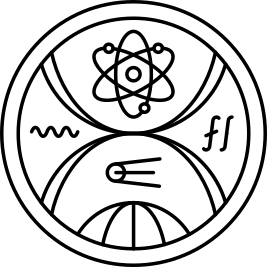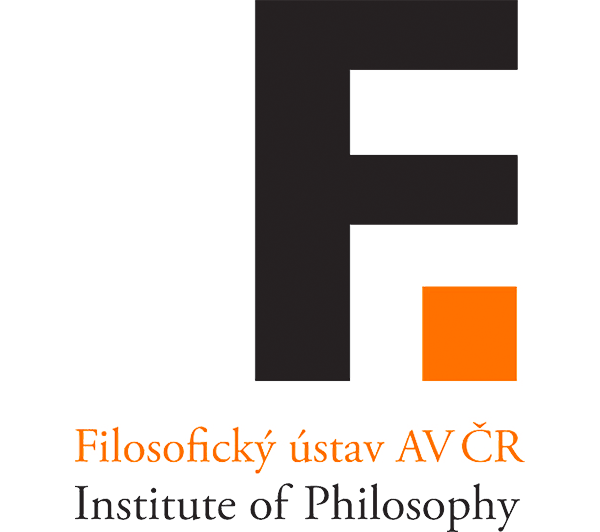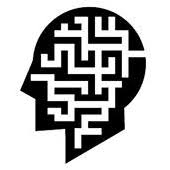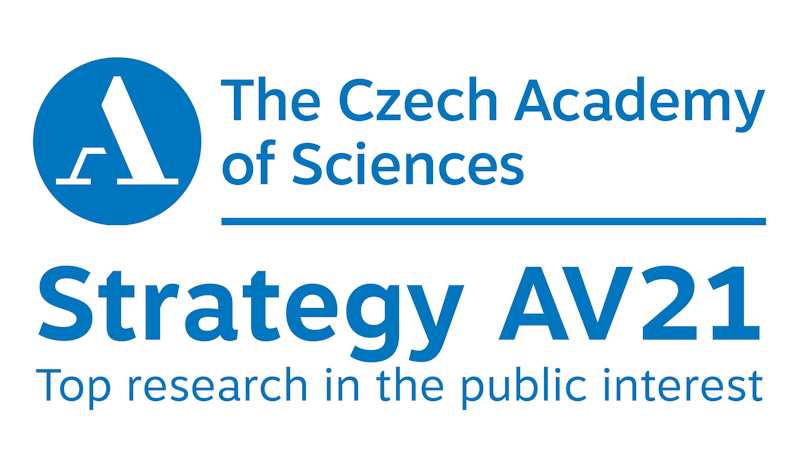List of submissions
Oxytocín vo vývine mozgu a autizme
Ján Bakoš, Tomáš Havránek, Denisa Mihalj, Daniela Ostatníková, Zuzana Bačová
Oxytocín je známy neuropeptidový hormón, ktorý sa okrem regulácie reprodukčných funkcií (pôrod, laktácia) podieľa v mozgu na ovplyvňovaní sociálneho správania. Oxytocín sa v mozgu vylučuje pri kontakte matky a potomka, pri pohľade do očí a pri mnohých iných sociálnych interakciách. Poruchy v tvorbe a sekrécii oxytocínu v konkrétnych oblastiach mozgu, alebo abnormality v signalizačných kaskádach oxytocínového receptora môžu prispievať k etiológii neurovývinových ochorení včítane porúch autistického spektra. Najmä v skorých štádiách vývinu mozgu, zmeny hladín oxytocínu ovplyvňujú počet neurónov, ich tvar, rast aj synaptogenézu, čo sa môže funkčne prejavovať zvýšenou alebo zníženou aktivitou nervových okruhov potrebných pre rozoznávanie a interpretáciu sociálne relevantných podnetov (črty a výraz tváre, tón hlasu, sociálny kontext). V našich štúdiách systematicky študujeme molekulárne a bunkové zmeny nervového tkaniva v podmienkach manipulácie oxytocínového systému a v kontexte animálnych modelov vykazujúcich autistické príznaky. Práca bola podporená grantami APVV-21-0189, VEGA 2/0057/23 a 2/0155/24.
Human-Guided Task Specification for Flexible Robotics
Karla Štěpánová
As robotics continues to expand into dynamic and small-batch production settings, the need for intuitive and flexible task specification is becoming increasingly important. This talk presents a novel approach to natural task specification, enabling rapid task definition and deployment without the burden of extensive programming. By integrating human demonstrations, language, and gestures, we create more accessible and adaptable ways to define task parameters and constraints. Additionally, we explore robust task representation methods that structure these specifications for easy transfer across different robotic setups and enable fluent transformation into executable robot plans. This approach also enhances adaptability to new environments and represents a significant step toward more human-centric, flexible robotic systems—bringing us closer to truly natural collaborative automation.
Artificial intelligence and the Unconscious
Juraj Hvorecký
Advances in generative artificial intelligence (GenAI) reignited debates on possibilities of artificial system to possess consciousness. Our contribution will reverse the optics of current views on the issue. We will start with the genesis of current debates on consciousness in GenAI networks and foundational arguments in its defense. Then we introduce the counterarguments and indicate reasons behind our sympathies with them. In the concluding part we will introduce a novel approach that reject the ascription of consciousness to GenAI systems yet considers them an interesting model of the unconscious. We will demonstrate how multimodal experiments with these systems support the idea of analogy with unconscious processing in humans and will also point out ethical and social consequences that follow from such analogy.
The Potential of the eDIVE+ Platform in Experimental Research in Psychology
Holubec František, Ondřej Kvarda, Oliver Pačut, Radim Holub, Martin Sivý, Zdeněk Stachoň, Čeněk Šašinka, Alžběta Šašinková
In recent years and projects, our team has developed the eDIVE platform, designed for collaborative learning through immersive virtual reality. From the early stages of its design, particular emphasis was placed on enabling user action logging for subsequent behavioral analysis. Within follow-up projects and ongoing development, the platform’s functionality has increasingly shifted towards the field of experimental psychology. The eDIVE+ platform is gradually being expanded with additional features (such as eye-tracking) and modules (such as user database and management systems), enhancing its potential as a research tool in the area of collaborative immersive virtual reality.
Tourists vs. Inhabitants. The Cognitive Frames Modeling as an Approach to Analyze a Place Transformation from Attractors and Selectionist Theory
Ivan Murin, Kęstutis Zaleckis, Aušra Mlinkauskienė, Ingrida Povilaitienė, Marius Ivaškevičius, Jaroslav Hanko
We proceed on anthropological theories of cultural and behavioral transmission where culture can be transmitted vertically (between local generations), horizontally between current populations and incoming groups, and by reciprocal oblique transmission through multiple modes. We compare the two transmission theories in a cognitive explanation of the general perception of cultural traits in urban area. The theory of natural selection of culture is based on the evolutionary paradigm of biased selection of the most appropriate and promising solutions for oneself and the reference community. For this theory we chose a research sample of the local population in Kaunas city. Cultural attractors are cognitive propositions that capture the way in which certain ideational variants are more likely to be the outcome of transformations than others. This way of reasoning is characteristic when a person becomes acquainted with an unfamiliar and new place. For this theory we chose a research sample of visitors, tourists in Kaunas. Both of these theories are based on different cognitive perceptions of place and different priorities from a long-term perspective. Applying such findings will improve our ability to recognize how to keep a particular place vital and sustainable in the long term.
Andrej Lúčny
Umožniť robotovi uvidieť na obraze objekty patriace k určitej zvolenej sade kategórii je dnes už celkom možné. Výzvou sa stáva schopnosť uvidieť akýkoľvek objekt. Veľký pokrok v tejto oblasti priniesli vizuálne transformery, prvé stroje, ktoré vedia lokalizovať objekt na základe určenia jeho kategórie. Kľúčovú rolu však v poslednom čase zohrávajú aj inovatívne metódy ich trénovania z veľkého množstva neanotovaných dát, ako je metóda CUTLER. Štartovacím prostriedkom takéhoto trénovania sú klasické metódy na segmentáciu obrazu. Tieto sa opierajú o optimalizáciu rozdelenia obrazu na popredie a pozadie, čo je spravidla NP-ťažká úloha. Návrh algoritmov na efektívne hľadanie približného riešenia týchto úloh sa tým dostáva do hlavného prúdu výskumu v hlbokom učení a prináša zaujímavé výsledky.
Hyperparameter space analysis via interpretable meta-modeling
![]()
Miroslav Cibula, Kristína Malinovská, Igor Farkaš
The performance of many machine learning models can be adjusted by hyperparameters, and hyperparameter optimization in search of the best-performing model configuration can be performed using various uninformed or informed search methods. In the present study, we aim to develop an analytical method revealing the individual effects of given hyperparameters on the performance of a model and use this information to find an optimal configuration. We implement the proposed method by modeling the model's performance as a function of the hyperparameter configuration using neural networks as a surrogate model and subsequently analyzing the surrogate model by feature-attribution methods.
Asistivna umelá inteligencia a ľudské hodnoty autonómie, úsilia a rozmanitosti
![]()
Martin Takáč
V súčasnosti sa rozmáha trend rôznych asistujúcich aplikácii na báze umelej inteligencie (UI). Aplikácie zbierajú o použı́vateľovi údaje, následne na ich základe budujú predikčný model použı́vateľa a asistujú mu v rôznych činnostiach, prı́padne nad nimi priamo preberajú kontrolu. Okrem etickej otázky kto zbiera dáta, čo z nich vie vyčı́tať a načo ich použije, sú tu aj ďalšie: ako asistı́vna UI ovplyvňuje ľudskú slobodu rozhodovania? Ako tvaruje naše voľby a naše správanie? Človek je komplexný tvor, ktorý nie je len racionálny optimalizátor, ale má aj iné aspekty, ktoré nemusia byť modelovateľné a predikovateľné. Ak človeka modelujeme ako mechanizmus a tak s nı́m interagujeme, nemechanizovateľné aspekty marginalizujeme a tým jednotlivca aj spoločnosť istým spôsobom tvarujeme. V mojom prı́spevku sa okrem tohto aspektu zameriam na vzťah asistı́vnej UI k hodnote ľudského úsilia, strádania a emočného vkladu a tiež poukážem na evolučné riziko koncentrácie, unifikácie a globalizácie technologických riešenı́ a ich vzťah k hodnote rozmanitosti.
Jiří Wiedermann, Jan van Leeuwen
Běžné definice vědomí jsou takřka bez výjimky antropocentrické. Považují totiž lidské subjektivní prožitky, jako jsou kválie, emoce a mentální představivost za fundamentální znaky vědomí. Tím však apriorně vylučují z rodiny vědomých entit řadu biologických i umělých agentů, jež se chovají, jako by byly vědomé. Proto začínají být považovány za vědomé, aniž by bylo jisté, zda shora zmíněné znaky vědomí naplňují. V příspěvku navrhneme formu vědomí, jež je založeno na funkcionálním dopadu subjektivních prožitků vyvolaných prožitkovými kvalitami událostí na chování biologických i umělých agentů. Z hlediska funkčního se vědomí takových agentů dostává do polohy shodné s lidským vědomím. Rozšířením chápání vědomí se mezi vědomé entity dostávají nejen jakékoliv živé organizmy, ale i umělí agenti nadání umělým vědomím, což je ve shodě se současnými trendy v biologii, kognitivních vědách, neurovědách i filosofii, a v neposlední řadě i umělé inteligenci.
Distance localization of nearby sound sources in reverberant rooms
![]()
Gabriela Andrejková, Norbert Kopčo
The three spatial dimensions - azimuth, elevation, and distance - are typically examined separately in sound localization studies. Santarelli et al. (1999) performed an experiment in a reverberant classroom in which subjects were asked to point to the perceived position of sound sources presented from a random location in the right hemifield within 1 m of the listener’s head. Here, a new analysis examines how distance localization response biases depend on source location simultaneously varying in all three dimensions on the same data. On average, a 10-% underestimation in distance judgments was observed. However, underestimation was as large as 30% for locations above listener, and it changed to overestimation of sources below. These results show that errors can be larger than observed previously, especially when vertical locations of stimuli are considered.
A Unified Model of the Reference Frame of the Ventriloquism Aftereffect Considering Auditory Saccade Adaptation
![]()
Ing. Peter Lokša, PhD., doc. Ing. Norbert Kopčo, PhD.
Loksa & Kopco (2023) introduced a model of the reference frame of the ventriloquism aftereffect (RFoVAE) that described many but not all available RFoVAE data by assuming that the auditory spatial map, natively using the head-centered reference frame, is adapted by visual signals in both eye-centered and head-centered reference frames. Here, the model is extended mainly by considering that, when saccade-to-sound responses are used in RFoVAE experiments, the saccades also undergo an adaptation – in the eye-centered reference frame. Also, the model proposes that the saccade-related and ventriloquism-related contributions to adaptation are combined using a normalized sum. The extended model can explain all available data, suggesting that the RFoVAE is largely head-centered, while saccadic adaptation accounts for the mixed reference frame observed experimentally.
Prediction of Observed Motor Trajectories in a Simulated Environment
![]()
Radovan Gregor, Igor Farkaš
Predicting the motion of a robotic arm is crucial for understanding observed behavior in human--robot interaction. In this study we present a method for predicting the future states of a motor trajectory and intended target of a robotic arm using an Echo State Network (ESN), exploiting the mirroring mechanism. In a simulated environment with two identical humanoid robots NICO -- an actor and an observer -- the observer learns to predict the actor’s motor intentions by simulating future states of motion based on visual input that is converted to observer's motor representation. The results show that our ESN-based model achieves accurate short-term trajectory and target prediction with low computational cost, making it useful for testing in real-world applications.
Koncepční pojetí umělého života jakožto univerzálního celulárního automatu
![]()
Jan Koubek
V článku pojednáváme o umělém životě a~problematice jeho uchopení napříč vědními obory. Navrhujeme revidovanou definici umělého života a~jako východisko budoucího bádání představen koncepční návrh univerzálního celulárního automatu (UCA). UCA je rozšířením dosavadního chápání celulárních automatů (CA), a~to skrze proměnlivou velikost uvažovaného okolí buňky, širší škálu možných stavů, vyšší stupeň volnosti pravidel a~především zavedení prvku náhody. Tyto úpravy jinak deterministického systému CA umožní ve svých důsledcích realizaci nebiologického umělého života jakožto sebezachovávajících, sebereprodukujících a~sebevyvíjejících se (tj. i mutujících) entit, a~to formou buněk v rámci UCA (a tedy simulace in silico). Jde pouze o~dosud nerealizovaný teoretický návrh vhodný pro další rozšíření. Text článku vychází z autorovy diplomové práce (https://vskp.vse.cz/94944).
Assessing the ability to resolve linguistic-conceptual conflict
![]()
Drahomír Michalko
Understanding natural language relies on the cognitive system’s sensitivity to shifting contextual demands. We introduce a new behavioral method, inspired by classic cognitive conflict paradigms, that systematically manipulates contextual demands and the semantic association of context-congruent and incongruent word stimuli. In line with the role of spontaneous processes in triggering conceptual conflict, we show that strong semantic links facilitate responses in congruent trials but consistently slow them in incongruent ones. Factor decomposition of reaction times further reveals that identifying congruent and incongruent stimuli engages distinct cognitive capacities.
Herní výkon a únava: Souběžný záznam herních a fyziologických dat v reálném čase
![]()
Filip Kyslík, Oto Janoušek, David Lacko, Benjamin Verner, Martin Ondrůj, Petr Květon
Hraní digitálních her je rozšířeným fenoménem, avšak intenzivní mapování dlouhých herních sezení a jejich dopadů na kognitivní funkce ráčů je v odborné literatuře stále spíše okrajové. Výzkumy dále hry často kategorizují podle žánrů nebo obecných charakteristik, přestože se nešní tituly liší v širokém spektru herních mechanik. V tomto příspěvku představujeme technické řešení pro souběžný a časově synchronní záznam objektivních herních dat z celosvětově oblíbené hry Dota 2, doplněný o fyziologická data hráče (HR, HRV, EEG) a další kanály. Díky kombinaci těchto zdrojů s klasickými psychologickými metodami lze získat inovativní vhled do dynamiky pozornosti a únavy hráčů komplexních digitálních her. Toto řešení může najít uplatnění nejen ve výzkumu kognitivní zátěže a adaptace během herních výkonů, ale i v oblasti e-sportu, kde může pomoci optimalizovat tréninkové strategie a předcházet únavě hráčů. Zároveň může být relevantní pro širší oblast kognitivní psychologie, například při studiu udržení pozornosti a kognitivních strategií v dynamických a vysoce náročných úlohách.
In Search of Meaning: Unveiling Interpretable Concepts in Neural Representation
![]()
Tamara Bíla, Igor Farkaš
In light of the increasing presence of artificial neural networks in both the public and private sectors, the demand and need for explainability is self-evident. In this work, we investigate several neural networks with varying depth trained for image classification. Our approach builds upon the previously developed Concept Activation Region (CAR) method in combination with hierarchical agglomerative clustering. By combining these two techniques simultaneously, we aim to achieve a multifaceted understanding of the internal representation structure of the target network.
Pozornost a zpracování emočně nabitých informací u depresivní symptomatologie a suicidálních ideací: pilotní eye-trackingová studie
![]()
Veronika Ročinová, Martina Sebalo Vňuková, MSc., Ph.D.; Ivan Sebalo, MSc., Ph.D.
Tato studie je součástí širšího výzkumného projektu probíhajícího ve Všeobecné fakultní nemocnici v Praze, který se zaměřuje na vztah mezi vizuální pozorností a emočním zpracováním informací u jedinců s depresivní symptomatologií a suicidálními tendencemi. Tato pilotní studie zkoumá mechanismy vizuální pozornosti a zpracování emočních podnětů u 77 zdravých jedinců jako kontrolní skupiny. Depresivní symptomy měříme českou verzí Beckova depresivního inventáře-II (BDI-II). Intenzitu suicidality pomocí Kolumbijské škály intenzity suicidality (C-SSRS). Pozornost je měřena úkolem s vizuálními podněty, během něhož zaznamenávame oční pohyby (eye-tracking). Emoční zpracování prostřednictvím modifikovaného Stroopova testu. Tato studie může přispět k hlubšímu pochopení pozornostních a emočních zkreslení souvisejících s depresí a suicidálními tendencemi. Výsledky by mohly přispět k vývoji objektivního behaviorálního nástroje pro screening depresivních a suicidálních tendencí, který by mohl nabídnout vyšší spolehlivost než tradiční sebeposuzovací metody.
The Dynamics of Cueing Effects on Auditory Spatial Discrimination
![]()
Yeganeh Modaresnia, Udbhav Singhal, Rene Sebena, Norbert Kopco
A previous study of attentional cuing in auditory spatial discrimination revealed a predominantly distracting effect of the auditory cues and no effect of the visual cues (Sebena et al., KUZ, 2017). Current study investigates whether the distraction arises from cue-target similarity or the spatial transition between cues and targets. Ten participants engaged in a task to assess the direction of an auditory target’s spatial shift triggered by valid or invalid auditory cues, with variations in cue types (same as the target or different) and spatial arrangements (three symmetrical positions), all while maintaining their gaze fixation at the center. Results for both cues showed improved performance with valid cues compared to invalid ones, along with a tendency to respond away from both the fixation point and the cue. These findings suggest that automatic attentional orienting is influenced more by distractive interference from preceding stimuli than by cue-target similarity. [The research is supported by the Slovak Scientific Grant Agency VEGA 1/0178/25; Slovak Research and Development Agency APVV-23-0054; SK-AT-23-0002 and HORIZON-MSCA-2022-SE-01 project No. 101129903.]
Synchronizace mezi jazykem a gesty během interakce s robotem
![]()
Karina Zamrazilová, Michal Vavrečka, Gabriela Šejnová, Sofia Ostapenko, Radoslav Škoviera, Julia Škovierová
Cílem naší studie je ověření faktu, zda jsou deklarativní gesta behem člověk–robot interakce (HRI) časově sladěna s příslušnými částmi jazykových instrukcí. Navrhli jsme proto VR experiment, ve kterém 26 participantů učilo humanoidního robota pomocí gest a řeči. Získaná data (n = 1126) ukazují, že gesta zaostávají za řečí: nástup gesta průměrně o 0.56±1.30 s (p < 0.001), vrchol o 0.66±1.25 s (p < 0.001), avšak celková délka gesta trvala déle než řeč. Analýza distribucí dat navíc odhalila, že přestože se signály liší v absolutním načasování, existuje mezi jejích klíčovými body korelace: nástup r = 0,644 (p < 0,001), vrchol r = 0,646 (p < 0,001). Výsledky naznačují, že lidé koordinují gesta s řečí spíše relačně než absolutně, což je důležité pro návrh multimodálních HRI rozhraní.
Kogňáci: Představení studentského spolku Společnost pro kognitivní vědu
![]()
Julia Urs, Karina Zamrazilová, Peter Guba
Společnost pro kognitivní vědu usiluje od svého založení o popularizaci vědeckého studia mysli a o propojení studentů vysokých škol i široké veřejnosti s předními osobnostmi z oblasti výzkumu a praxe. Jsme jedinou společností zaměřenou na oblast kognitivních věd v České republice a naším hlavním cílem je šíření povědomí o kognitivní vědě jako oboru, který k dnešnímu dni žádná vysoká škola v České republice nenabízí. Příspěvek se bude věnovat fungování spolku, jeho dosavadním úspěchům, vizí do budoucna a přínosu interdisciplinarity.
Možnosti rozvinutí uměleckého tvaru genetickým algoritmem
![]()
Mgr. Aleš Svoboda Ph.D.
Estetické oceňování uměleckých děl stále vyvolává vážnou intuici, že jejich vnímání provází zvláštní propojení celku a částí, že struktura díla obsahuje náležité funkční vazby mezi svými prvky, které přestože celek lidskému vnímání přibližují a samo vnímání snad dokonce usnadňují, neochuzují jej a neredukují. V tradici formalistické estetiky se v souvislosti s rozvojem počítačové vědy vyskytla řada impulsů, jak evaluovat estetické hodnocení, a dokonce uměleckou tvorbu v tomto ohledu kvalitativně posilovat. Pokud by bylo možné nalézt oceňované vlastnosti díla, lze předpokládat, že by vytvořením odpovídající evoluční výpočetní techniky šlo takové vlastnosti průběžně rozvíjet.
The Impact of Visualizations on Information Processing Efficiency: Multivariate Visualization Methods
![]()
Čeněk Šašinka, Jiří Čeněk, Zdeněk Stachoň, Alžběta Strnadová
In the past, we conducted a series of research studies investigating intercultural differences in perception across various task types. The results, on the one hand, generally do not support one of the dominant intercultural theories—the analytic-holistic approach—but at the same time, they confirm significant intercultural and individual differences in perception and cognition. These differences in information processing were influenced by the level of the educational system in a given country, individual differences in expertise, as well as the visualization method itself. One of the domains where we specifically examined individual and intercultural differences in perception was cartography, particularly the communication of spatial data. Within this context, we also focused on the subdomain of multivariate symbols. This paper comprehensively presents the series of experiments conducted and integrates partial findings.
Řízení humanoidního robota Tiago během manipulačních úloh na základě instrukcí a gest uživatele
![]()
Michal Vavrecka, Simon Dratva, Michal Prochazka, Radoslav Skoviera
V tomto příspěvku představujeme kognitivní architekturu pro řízení humanoidního robota Tiago pomocí jazykových instrukcí a deiktických gest. Naše modulární řešení samostatně zpracovává verbální vstupy uživatele, rozpoznává jeho gesta a určuje polohu objektů v 3D prostoru. Tyto multimodální vstupy jsou integrovány do jednotné reprezentace scény a následně analyzovány modulem Reasoner, který zpracovává uživatelský požadavek. Robot dokáže identifikovat objekt, na který uživatel ukazuje, a manipulovat s ním podle zadaného pokynu. Testování probíhalo na úlohách různé složitosti – od základního uchopení označeného objektu až po práci s předměty sdílejícími stejné vlastnosti nebo nacházejícími se v prostoru popsaném verbálním vstupem. Robot úspěšně splnil všechny scénáře, a to i v případech neúplných nebo konfliktních vstupů (pouze jazykový popis, pouze gesto či nesoulad mezi nimi).
Silvia Tomašková
Príspevok sa zaoberá prekvapivou domnienkou predstaviteľov filozofie mysle o iluzórnej povahe vedomia a vedomej skúsenosti (Dennett, Frankish). Kľúčová pre argumentáciu je diskusia o povahe “fenomenálneho charakteru” v zmysle introspektívnej ilúzie. Základné jadro problému spočíva v: 1. zmiešavaní prežívania fenomenálnej skúsenosti s poznaním povahy vedomých stavov, 2. neporozumení významu dištinkcie realita/javenie vo vzťahu k vedomej skúsenosti. Ťažký problém vedomia spočíva v preskúmaní “problému ilúzie”, otázky o tom, prečo sa filozofom zdá, že vedomá skúsenosť disponuje fenomenálnymi vlastnosťami. Cieľom príspevku je poukázať na pozitívny aspekt iluzionistického programu pre naturalistické riešenie problému povahy vedomej mysle.
Budú multimodálne veľké jazykové modely niekedy rozumieť svetu?
![]()
Farkaš Igor, Vavrečka Michal
Napriek pôsobivému výkonu pri rôznych úlohách, veľké jazykové modely (large language models, LLM) podliehajú problému ukotvenia symbolov, takže z pohľadu kognitívnej vedy sú to len štatisticky založené modely bez reálneho porozumenia. Multimodálne LLM (MLLM) sa snažia riešiť tento problém tým, že spájajú jazykové znalosti s inými modalitami, ako je videnie (obrázky a videá) alebo motorika, keď robot v spojení s LLM koná vo svete. Ak sa to nakoniec podarí, mohlo by sa to považovať za vyriešenie problému ukotvenia symbolov. V príspevku skúmame, do akej miery možno pomocou prepojenia MLLM s vteleným agentom dosiahnuť ukotvenie významov slov prostredníctvom interakcie s fyzickým svetom. Argumentujeme, že uzavretie medzery medzi symbolovými reprezentáciami a vteleným poznávaním, ktoré je nutné pre porozumenie svetu, si bude vyžadovať hlbšiu integráciu kontinuálnych senzomotorických signálov, deliberatívneho správania a adaptívneho učenia v reálnom prostredí.
Diagnosis of Asperger Syndrome in Socially High-Functioning Individuals
![]()
Alexandra Dyalee
This paper introduces a novel cognitive assessment tool aimed at improving the identification of individuals with Asperger syndrome, particularly those whose traits are not overtly visible through conventional communication channels but are present at a meta-level of information processing. The test expands on the structure of the Reading the Mind in the Eyes Test (RMET) by incorporating cognitive load measurements to distinguish between implicit and explicit social cognition strategies. The development rationale, test design, and hypotheses are outlined, and preliminary proof-of-concept results from a small sample (n = 5) are presented. Initial findings suggest the potential effectiveness of the method for detecting socially highfunctioning forms of Asperger syndrome.
Multi-agent modelling of climate change denial spread
![]()
Kalina Maria Piskorska, Martin Takáč
As technology and modern solutions for many issues progress, efforts can still be hindered by some phenomena that exist on a societal level. A prominent example is climate change denial, where individuals reject the scientific consensus about the reality of global warming and extreme weather anomalies, claiming that it is not a problem or that human activities have not induced it. To analyze the mechanisms of spread of climate change denial, we developed a simple framework based on belief changes and implemented it as an agent-based simulation in NetLogo. The results indicate that modifying the social and media-related trust parameters helps to reduce climate change denial in artificial populations. Furthermore, facilitating greater access to and acceptance of dissimilar views could counteract the polarisation of opinions on climate change in societies, allowing for more dynamic and productive discussions.
Human-Al Interaction in Language Acquisition: Evaluating LLM as a Language Partner
![]()
Oleksandr Lytvyn
This single-case study investigates the potential of ChatGPT’s advanced voice mode as a self-guided language partner for an upper-intermediate (B2.1-level) German learner, combining AI-mediated practice with the Sicher! B2.1 textbook (a standard intermediate German coursebook) across 30 structured sessions. Using a mixed-methods approach involving quantitative measures (vocabulary tracking, standardized tests, Positive and Negative Affect Schedule (PANAS) surveys) and qualitative instruments (reflective journals, word-cloud analyses, self-interviews), the study evaluated linguistic gains and affective outcomes. Results showed significant vocabulary expansion and improvements in conversational fluency, along with reduced anxiety and increased motivation attributed to ChatGPT’s low-pressure environment. However, limitations including technical instability, overly optimistic feedback, and a lack of pedagogical structure highlight the tool’s role as a supplementary resource rather than a standalone solution. The study underscores the value of hybrid AI-powered learning methodologies integrated with structured curricula to balance accessibility and linguistic rigor.
GeoAI a tvorba kognitivní mapy
![]()
Petr Rapant, Marek Menšík, Adam Albert
GeoAI, neboli prostorová umělá inteligence, je nově vznikající obor, který kombinuje geovědy a metody umělé inteligence za účelem získávání poznatků, vytváření předpovědí a podporu rozhodování o prostoru. GeoAI se standardně zaměřuje na zpracování obrazových dat, jako jsou družicové a letecké snímky a data ze senzorů, např. LIDAR nebo GNSS. Zpracování nestrukturovaných textů obsahujících i prostorová data je zatím méně běžné. Cílem našeho výzkumu je naučit GeoAI vytvářet v počítači zpracováním nestrukturovaných textů obdobu kognitivní mapy, známé ze studia reprezentace prostoru v mozku člověka. Kognitivní mapa je vnitřní (mentální) reprezentací vnější reality v mozku člověka především z hlediska prostorových vztahů mezi objekty.
Adaptation of the Cognitive and Affective Trust in Human--Robot Interaction Questionnaire to Slovak
![]()
Anna Karikó-Tóth, Mgr. Xenia Daniela Poslon, PhD., Phd; prof. Ing. Igor Farkaš, Dr.; Mgr. Štefan Pócoš
This study presents the Slovak translation and psychometric validation of the Cognitive and Affective Trust in Human--Robot Interaction (HRI) questionnaire, originally developed by Bernotat et al. (2019). Slovak-speaking university students (n = 46) evaluated 20 items on a 7-point Likert scale as part of a larger study. An exploratory factor analysis revealed a moderately replicable two-factor structure. However, a unidimensional construct was ultimately favoured due to theoretical overlap and item cross-loadings. The final 17-item scale demonstrated strong internal consistency (Cronbach’s α = .872), supporting the use of the questionnaire in future HRI research.
Scene Perception and Narrative Understanding by Multimodal Large Language Models
![]()
Ing. Branislav Zigo
Understanding an audiovisual perception as a story is a task that by far exceeds the complexity of image recognition and speech-to-text conversion. Such content understanding requires information that is not explicitly present in the scene, as well as estimation of the emotions, knowledge, and intentions of the actors involved. Decoding the meaning — understanding the story — can be considered as one of the most important human abilities. Humans have encoded this ability in their genome and develop it throughout life by observing, gaining experience, playing, learning, cooperating, and competing with others. (Mountford, Newbury 2019). The degree of this ability largely determines a person's success and status in human society. This article explores to which extent essential narrative structures, contextual cues, and commonsense knowledge can be made accessible to multimodal large language models to support coherent story comprehension.
Exploring the Impact of Math-Iconic Gestures in a Virtual Reality Robotic Tutor
![]()
Celina Mueller, Sebastian Wolff
This pilot study explores the potential of embodied learning through robotic gestures in virtual reality (VR) for mathematics education. We investigated whether math-iconic gestures performed by a robotic tutor in VR (NICO) can enhance engagement and enjoyability when teaching percentage calculations. In a VR experiment with 26 university students (13 per condition), we compared a robotic tutor using math-iconic gestures versus one without these gestures. Results show participants in the gesture condition reported significantly higher levels of engagement (22.6\% improvement, t(24) = 2.32, $p < 0.05$). The enjoyability scores were similar between conditions. Eye tracking data indicated increased visual attention to the robot in the gesture condition, with participants spending approximately 4.2 seconds longer looking at the robot's head and hands throughout the session. These findings suggest that embodied learning approaches utilizing gestures in VR robotic tutoring may offer promising pathways for mathematics education, particularly for enhancing student engagement.
Propagating uncertainity in normative models
![]()
Richard Dinga, Thomas Wolfers, Marijn van Wingerden
Normative modeling estimates population-level brain and psychometric phenotypes, adjusting for covariates like age and sex. However, these phenotypes often derive from noisy data, not direct measurements. Standard models applied to such data conflate true variation with measurement error, biasing estimates and distorting atypicality scores. Here we introduce a multilevel normative model that explicitly accounts for measurement uncertainty, enabling unbiased estimation of true phenotype distributions. Further, we propose new atypicality measures that incorporate uncertainity of the measurement thus reducing. Simulations confirm the method’s accuracy in recovering true distributions. Applied to real data, it improves detection sensitivity for abnormal task-based brain activity and psychometric network deviations over conventional methods. By modeling measurement noise, this approach enhances the reliability of normative models, with implications for both research and clinical use, and potential applicability to other domains involving uncertain measurements.
Homeostatic learning for classical artificial neural networks
![]()
Kristína Malinovská, Johanka Jakubove
Standard methods for training of the artificial neural networks (ANN) include various techniques for improving their success rates that are more mechanistic than brain-inspired. Brain-inspired learning makes use of elegant principles, such as homeostasis, for making biological neural networks learn more efficiently. The BCM rule is the most parsimonious model of neuronal learning in the brain today. An abstraction of this rule can potentially improve the efficiency of error-backpropagation-based learning in classical ANN. To test this hypothesis, we propose an adaptation of the classical multilayer perceptron to include a local learning rate component for each weight that decreases gradually through the training based on the activation of presynaptic and postsynaptic neurons.
Towards Spatial Memory of a Humanoid Robot
![]()
Laxmi R. Iyer, Lukáš Gajdošech, Branislav Zigo
In this work, we propose a novel approach to spatial memory in humanoid robotics. We imitate the allocentric spatial memory mechanism in humans by constructing a top-down spatial memory grid that estimates room occupancy and tracks human presence over time. Our method leverages recent visual foundational models. The robot captures a sequence of RGB images while rotating its neck joints, which are stitched into a panoramic view. Depth information is extracted and combined with person detection results to project spatial coordinates onto a 2D grid. This is inspired by the representation of space as an allocentric map in human spatial memory. Each grid cell maintains a confidence score reflecting the likelihood of human presence, decaying over time if the area is not observed. The decaying of confidence mimics forgetting in human memory. Our approach is evaluated using a fisheye camera for ground truth annotation, demonstrating robust occupancy estimation even in dynamic environments. Compared to traditional facial tracking and re-identification methods, our system provides enhanced adaptability and resilience to occlusions by relying on depth-aware spatial mapping.
Computational Models of Mental Health Disorders
![]()
Milica Kiš
This contribution has three main aims: (1) to provide a brief overview of types of computational models used in computational psychiatry (data-driven, theory-driven and combined approaches); (2) to offer a brief overview of all data types used in computational psychiatry (i.e. neuroimaging, genetic, digital, and behavioral data) and highlight possible problems in their use; (3) to synthesize findings from the application of these approaches to depression and to identify possible research gaps.








 cogsci.fmph.uniba.sk
cogsci.fmph.uniba.sk